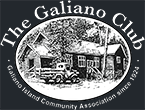Wetland Use, Water Use & Drainage
Here’s what the Environment & Agriculture Table Discussion group came up with regarding water use in the Gulf Islands.
- Buy water in bulk – a group in Saltspring is doing it
- If you take too much rainwater the groundwater is affected (plants do use the water and release into atmosphere (skipping the groundwater collection phase)
- Grow native plants – they don’t need as much water
- Or search out plants that require even less water (Mediterranean plants – person doing so on Galiano)
- Plan your operation to grow over time to support use of less water; grow shade plants
- Germinate plants in the shade even in the hot summer
- Raised beds provide great drainage (root plants all year long), 3″ on each side recommended. All water goes into your plants.
- Grow a Lasagna Garden: layers upon layers: newspaper, seaweed, then manure, then topsoil… in a heap ok (or boxed), supports crop after crop through the year
- Grow Purple Sproating Broccoli: year round, comes out in spring again, an endless crop of Broccoli. Small heads. Use the stem. Keep on chopping em off!
- Grow Kale and Chard (some for ten years; split and plant, or let them go to seed)
- Use ponds as reservoirs, pump from them, with 5000Gallon tank (switch to in winter when ponds are low)
- The forest can provide
- Read the book coming out by Adrienne Gregory of Galiano Island: The Active Herbalist. A book about herbs and wild plants that people have forgotten about that have all kinds of uses. Europeans wanted to recreate their gardens here but there is a lot here already. Look out for launch info!
- If everyone was out wildcrafting, would they be decimated with disease? No – Trust the plant!
- Plantain, Wild watercfress, Dandelion, 24 kinds of berries (blackberries, Salmonberry), Nettles (dried), Minor’s Lettuce, Chickweed (tonic)
- Grow Rosehips – make jam
- Harvest plants responsibly and they will still keep coming back
- Change mindset about raised beds and wild – get out the mindset of perfect rows
- Only take 5% of what the plant has to offer: but take care, harvesting as group is different than as individuals
- Work with habitat interconnections ie, Nettles and Butterflies…this is essential habitat, message in education
- Don’t glean too much – some of it is the wildlife’s food!
- Trade and share your harvest
What else can we do to promote sustainable use of water on the Gulf Islands?
